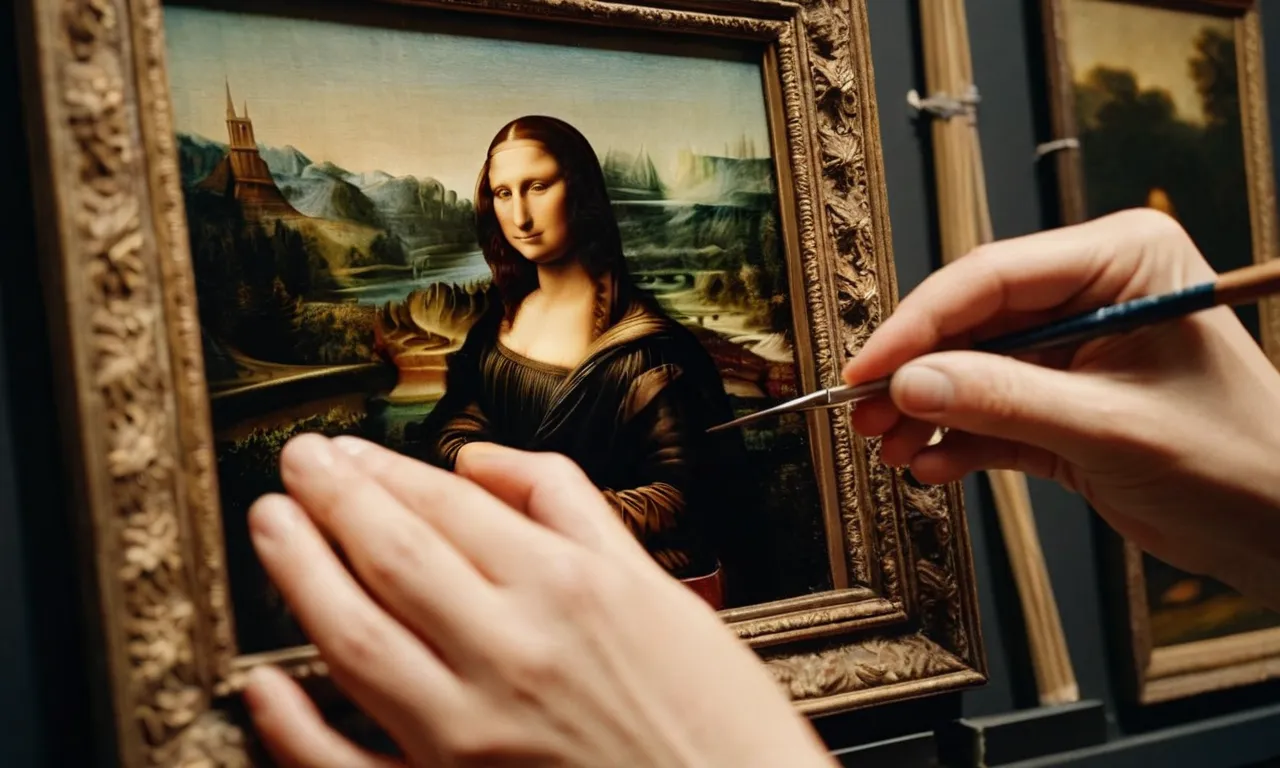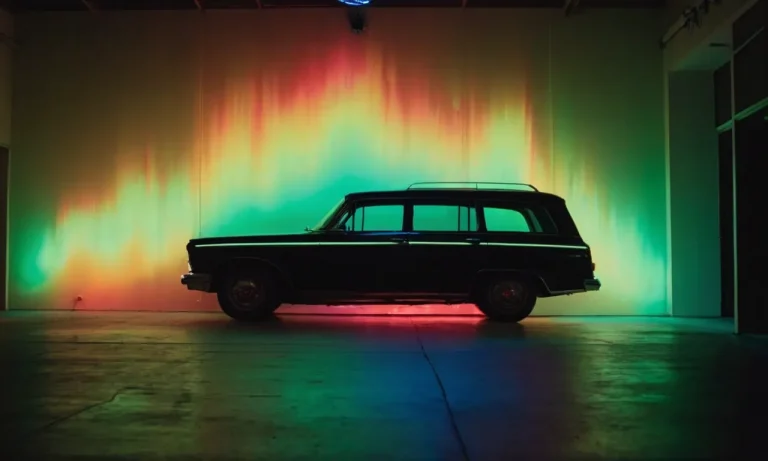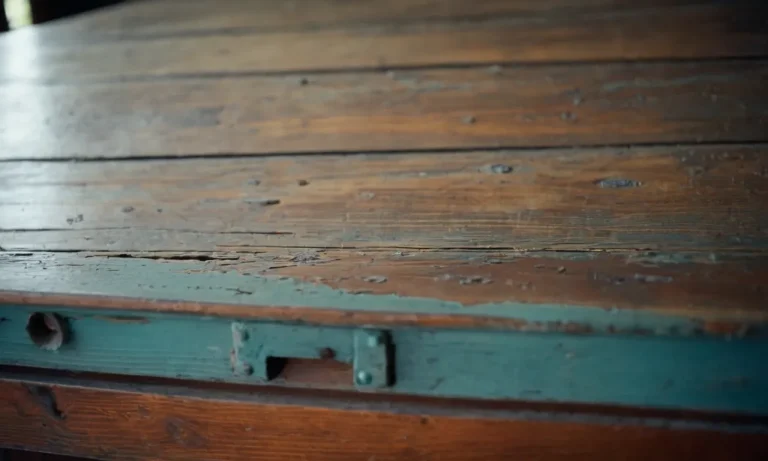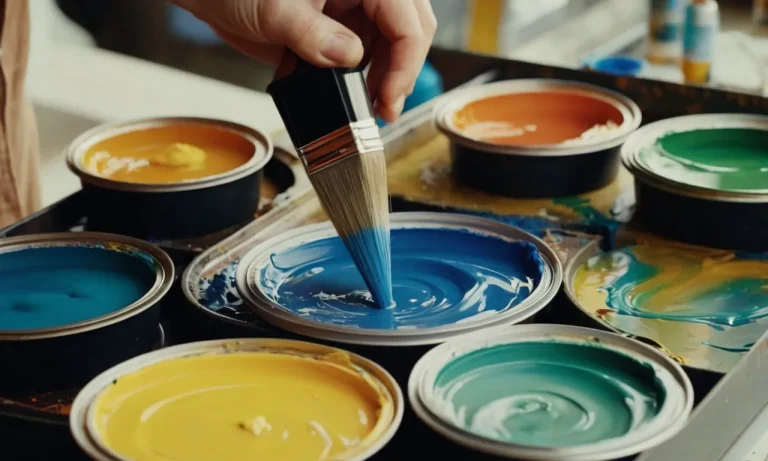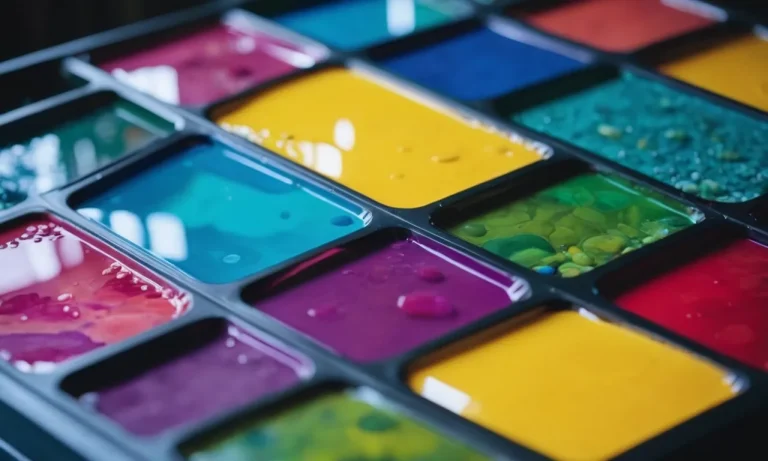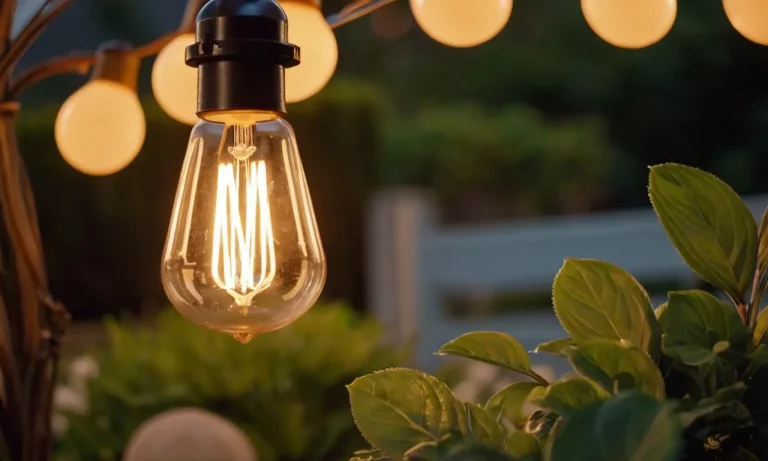How Long Did Leonardo Da Vinci’S Mona Lisa Take To Paint?
The Mona Lisa is one of the most famous and iconic paintings in the world. Painted by the legendary Italian polymath Leonardo da Vinci, it is a quintessential example of the Renaissance period. If you’re short on time, here’s a quick answer to your question: Leonardo da Vinci likely worked on the Mona Lisa for over a decade, starting around 1503-1506 and continuing to work on it until shortly before his death in 1519. But the full fascinating story behind the creation of this masterpiece is much more complex.
In this comprehensive article, we’ll explore the likely timeline behind the creation of the Mona Lisa, analyzing the available evidence from Leonardo’s notes and historical records. We’ll look at when he started the painting, how his work was interrupted over the years, and the techniques he used that contributed to the extremely long creation process.
Delving deep into art history, this article aims to satisfy the curiosity around how long this iconic painting took to complete.
When Did Leonardo da Vinci Start Painting the Mona Lisa?
Leonardo da Vinci likely began working on the iconic painting, the Mona Lisa, around 1503-1506. While the exact date remains uncertain, art historians believe that Leonardo started the masterpiece during this period.
Evidence from Leonardo’s Notes and Sketches
Leonardo da Vinci was known for his meticulous note-taking and sketching, providing invaluable insights into his creative process. In his notes, he mentioned a portrait that scholars speculate to be the Mona Lisa.
These notes indicate that Leonardo was actively working on the painting during the early 1500s.
Additionally, Leonardo’s sketches show studies of facial expressions, which are believed to be preparatory work for the Mona Lisa. These sketches demonstrate his dedication to capturing the perfect smile and enigmatic expression that has made the painting so famous.
Who Was the Model for the Mona Lisa?
One of the enduring mysteries surrounding the Mona Lisa is the identity of the model. While there are various theories, the most widely accepted hypothesis is that the subject of the painting was Lisa Gherardini, a woman from Florence, Italy.
Lisa Gherardini was the wife of Florentine merchant Francesco del Giocondo, which is why the painting is also known as “La Gioconda” in Italian. However, despite this widely accepted theory, some scholars continue to debate the true identity of the model.
It is worth noting that Leonardo da Vinci was not only a master artist but also a keen observer of human anatomy and emotions. His ability to capture the essence of the human soul in his paintings, including the Mona Lisa, continues to captivate audiences to this day.
For more information on Leonardo da Vinci and his works, you can visit LeonardoDaVinci.net.
Leonardo’s Painting Method Was Extremely Slow and Meticulous
Leonardo da Vinci, renowned for his artistic genius, was also known for his slow and meticulous painting process. He approached his work with a perfectionist mindset, taking great care and attention to detail in every stroke of his brush.
This deliberate approach meant that his paintings often took much longer to complete compared to other artists of his time.
Leonardo Was a Perfectionist Who Worked Slowly
Leonardo’s perfectionism was evident in his paintings, and he would often spend extended periods refining and perfecting his works. He believed that art should be a reflection of the natural world, and he strived to capture every minute detail with precision and accuracy.
This meticulous approach required him to work slowly, as he painstakingly built up layers of paint to achieve the desired effect.
He Used Innovative Techniques That Required Significant Time
One of the reasons for Leonardo’s slow painting process was his innovative techniques. He was constantly pushing the boundaries of art, experimenting with new methods and materials. For example, he used a technique called sfumato, which involved the subtle blending of colors to create a soft and hazy effect.
This technique required a great deal of time and patience to achieve the desired result.
Additionally, Leonardo was known for his extensive use of glazes, a transparent layer of paint applied over a dried layer. This technique added depth and richness to his paintings but also required multiple layers and drying time.
These innovative techniques, while groundbreaking, contributed to the lengthy process of creating his masterpieces.
The Mona Lisa’s Monitoring Smile Added Complexity
One of Leonardo’s most famous works, the Mona Lisa, is a prime example of his meticulous approach to painting. The enigmatic smile of the subject added an additional layer of complexity to the artwork.
Leonardo spent an extensive amount of time perfecting the subtle nuances of the smile, carefully adjusting and refining it until it conveyed the desired expression.
The Mona Lisa’s smile is often described as ambiguous, changing depending on the viewer’s perspective. This effect was achieved through Leonardo’s careful manipulation of light and shadow, as well as his attention to detail in capturing the delicate movements of the facial muscles.
The complexity of the smile added to the overall time it took to complete the painting, as Leonardo was determined to capture the essence of the subject’s expression.
Leonardo Was Interrupted Frequently While Working on the Mona Lisa
Creating a masterpiece like the Mona Lisa takes time and dedication. Leonardo da Vinci, renowned Italian artist and polymath, faced numerous interruptions during the creation of this iconic portrait.
He Had Many Other Projects and Demands on His Time
Leonardo da Vinci was not solely focused on the Mona Lisa during its creation. As a highly sought-after artist, he had numerous other projects and demands on his time. From painting commissions to scientific research, da Vinci had a wide range of interests that often pulled him away from his work on the Mona Lisa.
This meant that progress on the painting was frequently halted or delayed as da Vinci attended to other commitments.
War and Political Circumstances Forced Breaks in the Work
Historical events also played a role in interrupting da Vinci’s work on the Mona Lisa. During the time he was working on the painting, Italy was plagued by political instability and warfare. These tumultuous circumstances forced da Vinci to take breaks from his artistic pursuits to address the pressing issues of the time.
Whether it was serving as a military engineer or advising rulers, da Vinci’s involvement in these activities undoubtedly impacted the timeline of the Mona Lisa’s completion.
He Carried the Unfinished Painting With Him When He Moved
Interestingly, da Vinci carried the unfinished Mona Lisa with him when he moved. Whether he was seeking new opportunities or escaping the chaos of war, da Vinci’s nomadic lifestyle meant that the painting was constantly on the move. This further contributed to the intermittent nature of its creation.
Despite the challenges posed by his frequent relocations, da Vinci was determined to continue working on the Mona Lisa whenever possible, even if it meant carrying it with him on his journeys.
Leonardo Worked on the Painting Until the End of His Life
Leonardo da Vinci’s masterpiece, the Mona Lisa, is a work of art that continues to captivate audiences around the world. One of the intriguing aspects of this iconic painting is the amount of time it took for Leonardo to complete it.
While there are no definitive records, it is believed that Leonardo worked on the painting until the end of his life.
There Are No Records of the Painting Before Leonardo’s Death
Unfortunately, there are no detailed records or documentation that provide an exact timeline for the creation of the Mona Lisa. However, based on historical accounts and analysis of the painting itself, art historians estimate that Leonardo started working on the masterpiece in the early 1500s.
It is believed that he continued to refine and perfect the painting over the course of several years.
What makes the timeline even more fascinating is the fact that Leonardo was known for his meticulous attention to detail. He would spend hours, days, and even weeks on a single brushstroke, striving for perfection in every aspect of his work.
This dedication and commitment to excellence are evident in the Mona Lisa’s intricate details and the overall sense of depth and realism that it portrays.
His Pupil May Have Added Some Final Touches
While Leonardo is credited as the primary artist behind the Mona Lisa, there is a possibility that one of his pupils, possibly Francesco Melzi, may have added some final touches to the painting. It was not uncommon for Leonardo to collaborate with his apprentices and allow them to contribute to his works.
However, the extent of their involvement in the Mona Lisa remains uncertain.
Some art scholars speculate that the subtle variations in brushwork and style seen in different areas of the painting could be attributed to the involvement of another artist. However, without concrete evidence, this theory remains a subject of debate among experts.
It Was Sold by His Assistant Shortly After His Death
After Leonardo’s death in 1519, the Mona Lisa remained in his possession. However, it was sold by his assistant, Salai, to a French King, Francis I, in the early 16th century. The painting then became part of the royal collection and has since been housed in the Louvre Museum in Paris, where it continues to attract millions of visitors each year.
The Mona Lisa’s enduring legacy and the mystery surrounding its creation have made it one of the most celebrated and studied works of art in history. While we may never know exactly how long it took Leonardo da Vinci to paint this iconic masterpiece, its beauty and enigmatic allure continue to inspire and fascinate art lovers around the world.
Conclusion
Leonardo da Vinci’s Mona Lisa stands as one of the greatest artistic achievements in history. The enigmatic smile of La Gioconda continues to enthrall viewers centuries after it was painted. Based on available evidence, experts believe Leonardo worked on the Mona Lisa for over a decade, nearly his entire career as a painter.
His meticulous techniques and never-ending quest for perfection resulted in the masterwork as we know it. The complex story behind the creation of the Mona Lisa ultimately adds to its mystery and appeal.
This iconic painting demonstrates Leonardo da Vinci’s genius and cements his status as one of the greatest artists and thinkers in human history.

